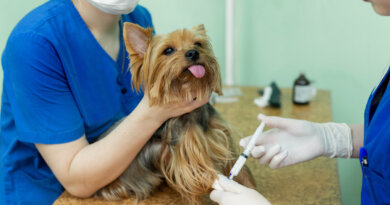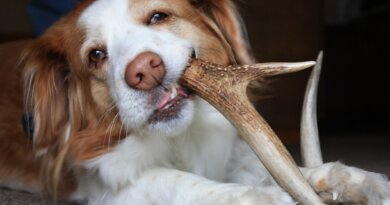How to Wash Dog Toys
Does your dog have a favorite toy? He plays with it daily, sleeps with it nightly, and when guests come over, he excitedly parades around with it. That toy is the source of much joy and happiness, but if it’s not cleaned regularly, it’s also the source of significant bacterial build-up.
In a 2011 germ study by NSF International, pet bowls and toys each ranked among the top 10 germ-infested items commonly found within the home. Left unchecked, toys become a breeding ground for a variety of bacteria such as staph, yeast, mold, and even fecal contaminants like e. coli.
Developing a cleaning schedule for your dog’s toys and bedding can help keep both pets and people healthy by reducing the amount of bacteria and allergens in the environment. Toys that can be “stuffed” with food, such as Kongs, Toppls, or similar items, should be thoroughly cleaned after each use. Food and water bowls should be cleaned daily, too.
HOW TO WASH DOG TOYS
According to Rachel Goldammer, a service-dog breeding consultant and interim kennel manager at Guide Dogs of America in Sylmar, California, it’s important to use a degreasing agent when washing both hard and soft toys.
A degreaser is needed to break up biofilm, that slimy layer commonly found at the bottom of your dog’s food and water bowls. It’s also what makes used hard toys and bones feel slippery when wet, and what makes well-loved, unwashed soft toys start to feel a little crispy. It may seem like harmless dog slobber, but it’s actually a pesky mix of bacteria – hiding out underneath a protective layer of proteins and lipids – with the potential to make both pets and people sick.
When washing hard, non-porous bones and toys, dish soap (such as Dawn Dishwashing Liquid) works well, as it’s designed to cut grease on kitchenware. Fill the sink with hot water and add soap. Allow bones and toys to soak for five to 10 minutes. Scrub and rinse well. For maximum cleanliness, finish with a disinfecting soak in a diluted bleach-water bath using 2 tablespoons of bleach per 1 quart of water. Rinse well.
You can clean dishwasher-safe toys using your dishwasher’s sanitize mode, as long as the water temperature reaches at least 120° F.
Many people prefer a more natural approach to disinfecting. For example, The Honest Kitchen recommends soaking hard bones and toys in a bath of equal parts water and white vinegar, using a sprinkle of baking soda on toys in need of an especially good scrub. While this may suffice under normal conditions, Goldammer says certain bacteria and protozoa can survive many of the natural cleaners, so consider your personal circumstances when deciding how to clean.
HOW TO CLEAN SOFT DOG TOYS

For washing soft dog toys, Goldammer recommends Tide Original liquid laundry detergent on a hot-wash cycle. “It doesn’t leave a residue, and a little goes a long way,” she says. Tide Original is her product of choice not only for its proven degreasing properties, but also because it contains fewer chemicals than most laundry pods or specialty formulas.
Tossing your dog’s toys in with your weekly hot-wash load, regardless of which laundry product lines your shelf, is a good start. But remember – while it will get the toys visibly cleaner, it may not effectively kill all the bacteria. If you share your home with immunocompromised pets or humans, it may be worth switching to Tide Original for its biofilm-busting properties and some added peace of mind.
It’s good practice to wash your dog’s toys every couple of weeks. Creating multiple sets of toys can help establish a cleaning routine while keeping your dog excited about the “new” toys that seem to appear every other week. As you rotate toys, be sure to inspect for damage that might lead to the accidental ingestion of pieces and parts.




